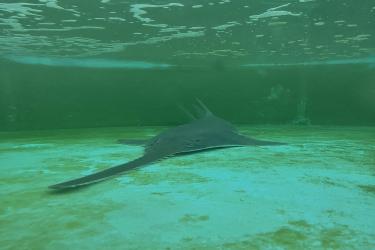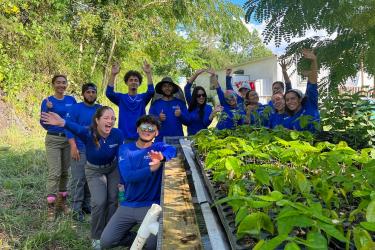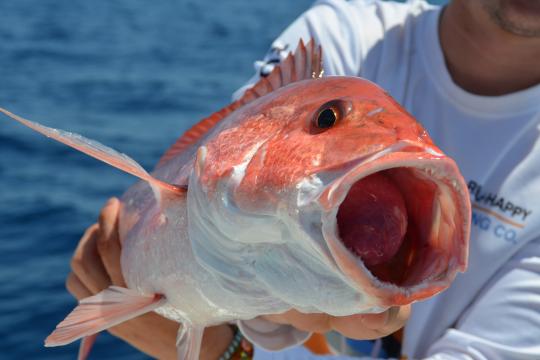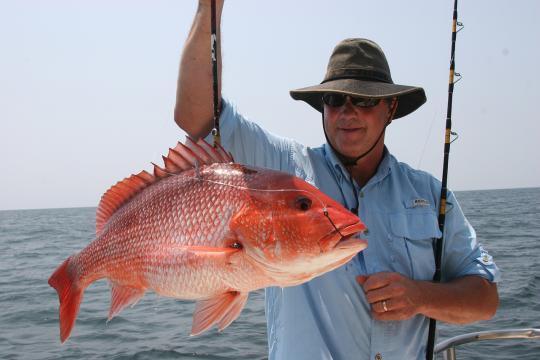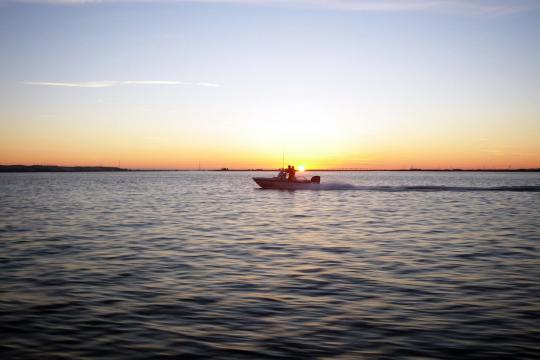Key Messages:
NOAA Fisheries announces implementation of the final rule for Framework Amendment 11 under the Fishery Management Plan for Coastal Migratory Pelagic Resources of the Gulf of Mexico and Atlantic Region. This rule modifies Gulf of Mexico Migratory Group king mackerel catch limits.
When Rule Will Take Effect:
Regulations become effective January 6, 2023.
What This Means:
- Framework Amendment 11:
- Modifies the units used to monitor Gulf of Mexico migratory group king mackerel landings from the Marine Recreational Information Program (MRIP) Coastal Household Telephone Survey to the MRIP Fishing Effort Survey, and
- Specifies new overfishing limits and acceptable biological catch levels.
- The rule:
- Modifies the sector annual catch limits and commercial zone (Figure 1) annual catch limits as indicated in Tables 1 and 2 below.
Figure 1. Gulf and Atlantic king mackerel stock boundaries as currently used for management purposes by the Gulf of Mexico and South Atlantic Fishery Management Councils. The Gulf of Mexico is divided into commercial management zones, which are managed by the Gulf of Mexico Fishery Management Council, and includes the mixing zone (hashed area). The South Atlantic Fishery Management Council management area is divided into a Northern and Southern Zone, extending north to the easternmost tip of Long Island, New York.
Table 1. 2022/2023 and 2023/2024+ overfishing limits (OFL), acceptable biological catch (ABC) levels, total annual catch limits (ACL), recreational sector ACLs, and commercial sector total ACLs in pounds landed weight.
|
Fishing Year |
OFL |
ABC |
Total ACL |
Recreational ACL |
Commercial Total ACL |
|
2022/2023 |
11,050,000 |
9,720,000 |
9,720,000 |
6,609,600 |
3,110,400 |
|
2023/2024+ |
11,180,000 |
9,990,000 |
9,990,000 |
6,793,200 |
3,196,800 |
Note: Recreational ACL values are in MRIP-Fishing Effort Survey units.
Table 2. 2022/2023 and 2023/2024+ commercial total ACLs and commercial zone ACLs in pounds landed weight. HL = hook and line; GN = gillnet.
|
Fishing Year |
Commercial Total |
Western Zone HL |
Northern Zone HL |
Southern Zone HL |
HL Total |
Southern Zone GN |
|
2022/2023 |
3,110,400 |
1,244,160 |
559,872 |
653,184 |
2,457,216 |
653,184 |
|
2023/2024+ |
3,196,800 |
1,278,720 |
575,424 |
671,328 |
2,525,472 |
671,328 |
Formal Federal Register Name/Number: 87 FR 74989, published December 7, 2022.
Frequently Asked Questions
Why are the catch limits being reduced?
- The most recent Southeast Data, Assessment, and Review population assessment for Gulf of Mexico migratory group king mackerel, known as the SEDAR 38 Update, showed the population was not overfished (i.e. the population is not too low) or undergoing overfishing (i.e. too many fish are not being caught). However, it did show that recruitment (larvae showing up in plankton surveys) has been low in recent years.
- SEDAR 38 Update used updated recreational catch and effort data from the MRIP Fishing Effort Survey, which estimated larger than previously calculated catch and effort for the recreational sector.
- Because MRIP Fishing Effort Survey data were used, estimates of historic recreational landings were greater than in previous assessments.
- The “increase” in the recommended catch limits compared to the current catch limits is largely a result of converting the recreational catch and effort data to the MRIP Fishing Effort Survey data currency.
- The Gulf of Mexico Fishery Management Council’s Scientific and Statistical Committee recommended a reduction in the OFLs and ABCs to address decreased recruitment.
Where can I find more information on Framework Amendment 11?
- Contact NOAA Fisheries, Southeast Regional Office.
By Mail: Kelli O’Donnell
NOAA Fisheries, Southeast Regional Office
Sustainable Fisheries Division
263 13th Avenue South
St. Petersburg, Florida 33701-5505
By FAX: (727) 824-5308
By Phone: (727) 824-5305
- Framework Amendment 11 may be found online at the NOAA Fisheries Southeast Regional Office Web site at: https://www.fisheries.noaa.gov/action/framework-11-management-gulf-king-mackerel.
SIGN UP FOR TEXT MESSAGE ALERTS - FIND OUT ABOUT IMMEDIATE OPENINGS AND CLOSURES
NOAA's Text Message Alert Program allows you to receive important fishery related alerts via text message (SMS). Standard message & data rates may apply. You may opt-out at any time.
Text alerts you may receive include:
- Immediate fishery openings and closures
- Any significant changes to fishing regulations that happen quickly
Sign up for one or more of the following groups:
- Gulf of Mexico Recreational Fisheries Related Alerts
- Text GULFRECFISH to 888777
- Gulf of Mexico Commercial Fisheries Related Alerts
- Text GULFCOMMFISH to 888777
- South Atlantic Recreational Fisheries Related Alerts
- Text SATLRECFISH to 888777
- South Atlantic Commercial Fisheries Related Alerts
- Text SATLCOMMFISH to 888777
- Caribbean Fisheries Related Alerts
- Text CARIBFISH to 888777
Quick Glance Contact List for the NOAA Fisheries Southeast Regional Office
Permits Mailbox: The Permits Office in St. Petersburg, Florida. now has a Permits mailbox in the front lobby (263 13th Ave. South, St. Petersburg, Florida 33701). You can now drop off original permits for permit transfers. Envelopes with information labels will be provided so that your documents can be attached to the correct application. The mailbox will be checked daily. For more information, contact the Permits Office at 877-376-4877.
Other contacts:
Media: Allison Garrett, 727-551-5750


